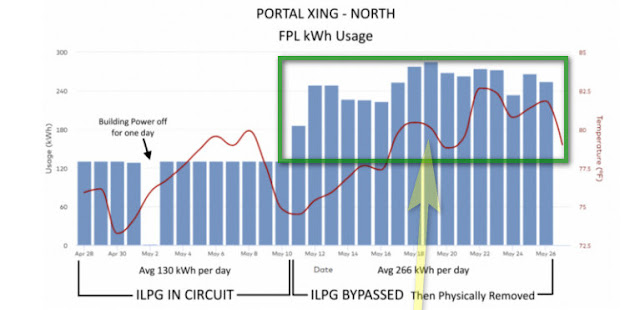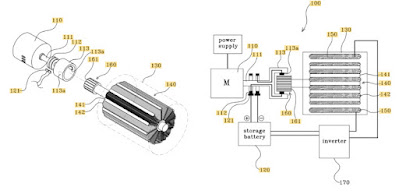Existing Over Unity System - Holcomb Energy System generator https://holcombenergysystems.com/. Device for obtaining energy by electromagnetic induction. To enhance the magnetic flux, a method of increasing the magnetic flux in electrical steel due to magnetic permeability is common.
All that was done by Dr. Holcomb is a solution of the original design: where the rotor was replaced, in a traditional electromagnetic synchronous generator with a constant source of magnetic flux (electromagnet), to a solid design, with dynamic switching of the number of electromagnets simulating the rotation of magnetic .
Note that in a synchronous generator, the dynamic rotor is replaced by a solid! There is no physical rotation of bodies, no physical speed.
It is proved that the generator is not a device for converting mechanical energy (Pk = F * v) into electrical energy (Pe = I * U).
If you look at the formulas, it is a statement of modern science, the enlightenment of this postulate - is a fact of the established concept of the absurd.
Ingeniously simple! Synchronous generator is the main source of electricity in electrical networks. Even easier for the household, instead of a mini hydroelectric power plant, windmill or solar panel complex, you need a small solid-state generator.
Dr. Holcomb not only voiced and formalized the idea in patents, but also embodied it in many existing designs. In addition, the device is used on a commercial site.
The question is what else needs to be proved? Trolls are brainwashing the nobility! Even if the gentleman decides to build this device, he will have to study the engineering method of construction. This is a seemingly simple method, without good knowledge and skills you can not master it.
I am glad that Dr. Holcomb was able to implement this idea. I can't believe no one has thought about it before.
The law of conservation of energy does not work in a solid-state generator system.
Magnetism and electricity can not be tied to the physical mass and physical velocity of this mass. Above I gave two formulas of power - mechanical and electrical.
This is the paradox of a device, a synchronous mechanical or solid-state generator. According to the introduction of electric excitation power and obtaining useful amplified power by the consumer, mechanical and solid-state generators are almost identical. We excite with less force, we get more. Amplifier is the ability of "magnetic flux" to accelerate - in the material of electrical steel.
For example, if the magnetic "conductivity" of the magnetic flux of air is equal to 1, the magnetic "conductivity" of electrical steel is 4000.
What it is? This is superconductivity in terms of air conductivity in vacuum. Correctly called magnetic permeability. But this is the initial parameter, followed by magnetic saturation. As the magnetic permeability decreases and the magnetic intensity increases, the conductivity decreases and the magnetic saturation (magnetic induction) is calculated. Magnetic induction has a limit of this saturation, so push more to get more will not work.
This is a good pair of chapters. Although everything is in academic textbooks of physics. This is not a closed science, it is taught in all specialized educational institutions.
https://www.patentguru.com/assignee/holcomb-scientific-research-limited
Conversion rates of solid state generators installed at a US facility by Holcomb Energy Systems. His reports and marketing publications show approximately a conversion rate of 1,3-2.0. Company Publication:
These graphs, direct from Florida Power & Light’s billing website and corroborated by the HES System meters, verify that when the ILPG system is installed and in-circuit, it delivers an average daily efficiency of 205%. During the day, the lowest efficiency observed is 130% while the greatest efficiency observed is 260% during late afternoons because of the increased building load of the air conditioning system.
There is information that these generators as power amplifiers are already being supplied to customers from the USA. Measurements of conversion capabilities when measured by instruments recommended by NASA https://fb.watch/fMZMcgmLij/
The peculiarity of this patent is that in the simplest generator that we discussed above, the mechanical magnetic rotor is replaced by a solid-state (static) one, in which electromagnets are switched through movable brushes and a static collector on a static rotor.
The peculiarity of this patent is that a static rotor with electromagnets controlled through a commutator-brush switching unit is attached to the generator stator where the winding is laid in grooves.













2 коментарі:
i am following your posts which i consider them very informative , what about your book where we can find it ?
Good time! The book "Electromagnetic Generator - Over Unity" is not yet ready. Everything takes time and money. Sincerely.
Дописати коментар